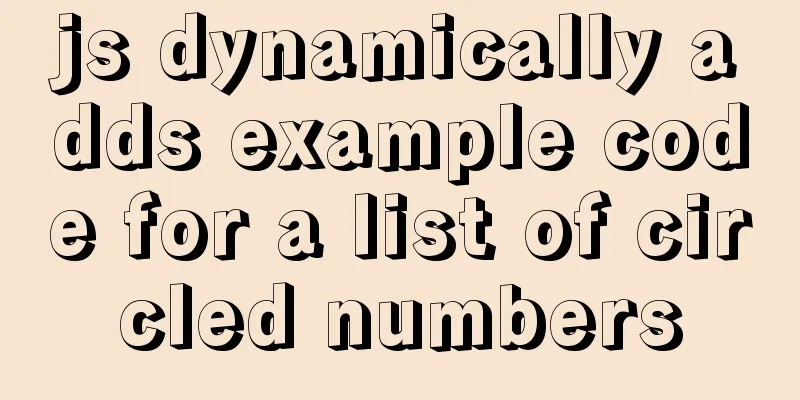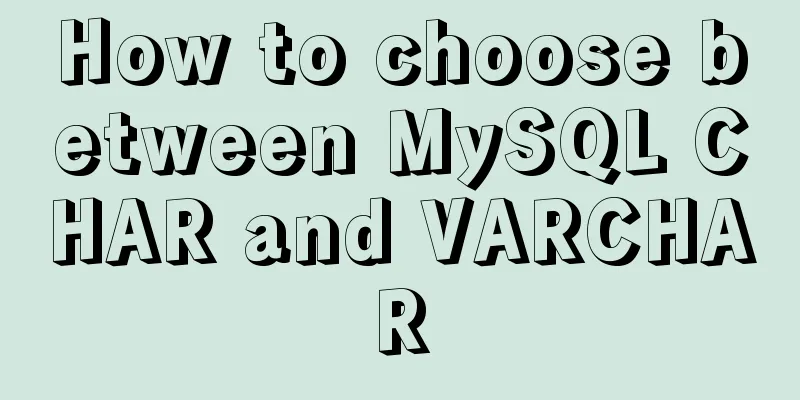An article to understand operators in ECMAScript

Unary OperatorsOperators that can only operate on one value are called unary operators Incremental and decremental. The increment and decrement operators are borrowed from C, and come in two versions: pre-increment and post-increment.
var age = 29; var anotherAge = --age + 2 console.log(age) // 28 console.log(anotherAge) // 30 Postfix type: The operator is placed after the variable to be operated on. Post-increment and decrement operations are performed after the statement containing them is evaluated. var num1 - 2; var num2 = 20 var num3 = num1-- + num2; // 22 var num4 = num1 + num2; // 21 The above four operators are applicable to any value, that is, they can be used for strings, Boolean values, floating-point values and objects. Follow these rules:
The above rules are verified:
var s1 = "2";
var s2 = "z";
var b = false;
var f = 1.1;
var o = {
valueOf: function () {
return -1
}
}
console.log(s1++); // 2
console.log(s1); // 3
console.log(s2++); // NaN
console.log(s2); // NaN
console.log(b++); // 0
console.log(b); // 1
console.log(f--); // 1.1
console.log(f); // 0.1000000000000009
console.log(o--); // -1
console.log(o); // -2
Unary plus and minus operators Unary addition and subtraction operators are mainly used for basic arithmetic operations, and can also be used to convert data types. That is, when a unary operator is applied to a non-numeric value, the operator performs a conversion on the value just like the Number() conversion function. Boolean values false and true are converted to 0 and 1, and string values are parsed according to a special set of rules. Objects are parsed by calling their valueOf() or toString() method first, and then the resulting value is converted. Take the unary plus operator as an example:
var s1 = "01";
var s2 = "1.1";
var s3 = "z";
var b = false;
var f = 1.1;
var o = {
valueOf: function () {
return -1
}
}
s1 = +s1
s2 = +s2
s3 = +s3
b = +b
f = +f
o = +o
console.log(s1) // 1
console.log(s2) // 1.1
console.log(s3) // NaN
console.log(b) // 0
console.log(f) // 1.1
console.log(o) // -1
Boolean OperatorsThere are three Boolean operators: NOT, AND, and OR. 1. Logical NOT. Indicated by an exclamation mark (!), it can be used with any value in ECMAScript. This operator returns a Boolean value regardless of the data type of its operands. The logical NOT operator first converts its operand to a Boolean value and then negates it. Follow the rules
console.log(!false); // true console.log(!"blue"); // false console.log(!""); // true console.log(!0); // true console.log(!undefined); // true console.log(!null); // true console.log(!NaN); // true console.log(!12345); false 2. Logical AND. The operator is represented by two ampersands (&&) and has two operands. The logical AND operator can be applied to operands of any type, not just Boolean values. The logical AND operation does not necessarily return a Boolean value if one of the operands is not a Boolean value; in this case, it follows these rules:
The logical AND operation is a short-circuit operation, that is, if the first operand can determine the result, the second operand will not be evaluated. 3. Logical OR. An operator is represented by two vertical bar symbols (||) and has two operands. Similar to the logical AND operation, logical OR does not necessarily return a Boolean value if one of the operands is not a Boolean value; in this case, it follows the following rules:
Like the logical AND operator, the logical OR operator is also a short-circuiting operation. That is, if the first operand evaluates to true, the second operand will not be evaluated. Multiplication OperatorECMAScript defines three multiplicative operators: multiplication, division, and modulo. If an operand in a multiplication calculation is not a numeric value, the backend will first use the Number() conversion function to convert it to a numeric value, such as an empty string will be treated as 0, and a Boolean value of true will be treated as 1. 1. Multiplication. The operator is represented by an asterisk (*) and is used to calculate the product of two numbers. The multiplication operator follows special rules when dealing with special values:
2. Division. The operator is represented by a slash symbol (/) and performs the calculation of dividing the second operand by the first operand. Follow these rules:
3. Find the modulus (remainder). Operators are represented by a percent sign (%). Follow these rules:
Additive OperatorSimilar to the multiplication operator, the addition operator also converts between different data types behind the scenes. 1. Addition. The addition operator is represented by the plus sign (+). If both operands are numbers, normal addition is performed and the result is returned according to the following rules:
If either operand is a string, the following rules apply:
2. Subtraction. The subtraction operator is represented by the minus sign (-) and follows the same rules as the addition operator:
var result1 = 5 - true var result2 = NaN - 1 var result3 = 5 - 3 var result4 = 5 - "" var result5 = 5 - "2" var result6 = 5 - null console.log(result1) // 4, true is converted to 1 console.log(result2) // NaN console.log(result3) // 2 console.log(result4) // 5, empty string is converted to 0 console.log(result5) // 3, string 2 is converted to number 2 console.log(result6) // 5, because null is converted to 0 Relational OperatorsThere are four relational comparison operators: less than (<), greater than (>), less than or equal to (<=), and greater than or equal to (>=). When non-numeric values are used as operands of relational operators, data conversion or some strange operations must also be performed. The corresponding rules are as follows:
When comparing strings, what is actually compared is the character code value of each character in the corresponding position in the two strings. After this comparison, a Boolean value is returned. The character code of uppercase letters is smaller than that of lowercase letters. Equality OperatorTwo sets of operators: equality and inequality - convert first and then compare; strict equality and inequality - compare only without conversion 1. Equality and inequality. The equality operator is represented by two equal signs (==), and returns true if the two operands are equal. The inequality operator is represented by an exclamation mark followed by an equal sign (!=), and returns true if the two operands are not equal. Both operators convert their operands (often called casting) before comparing them for equality. When converting between different data types, follow these basic rules:
These two operators follow the following rules when comparing
2. Congruent and incongruent. The strict equality operator is represented by three equal signs (===), and it returns true only if the two operands are equal without conversion. The strict inequality operator has an exclamation mark followed by two equal signs (!==), which returns true if the two operands are not equal without conversion.
var result1 = ("55" == 55)
var result2 = ("55" === 55)
var result3 = ("55" != 55)
var result4 = ("55" !== 55)
console.log(result1) // true
console.log(result2) // false
console.log(result3) // false
console.log(result4) // true
Conditional Operators Syntax: In the above example, max will store the maximum value. The expression means: if num1 is greater than num2 (the relational expression returns true), the value of num1 is assigned to max; if num1 is less than or equal to num2 (the relational expression returns false), the value of num2 is assigned to max. Assignment OperatorThe assignment operator is represented by the equal sign (=), and its function is to assign the value on the right to the variable on the left. If you add a multiplication operator, an additive operator, or a bitwise operator before the equal sign, you can complete a compound assignment operation. Each of the main arithmetic operators (and a few other operators) has a corresponding compound assignment operator. These operators are as follows:
Comma Operator The comma operator can perform multiple operations in one statement, such as: The comma operator can also be used for assignment. When used for assignment, the comma operator always returns the last item in the expression. For example: SummarizeThis is the end of this article about operators in ECMAScript. For more relevant ECMAScript operators, please search for previous articles on 123WORDPRESS.COM or continue to browse the related articles below. I hope you will support 123WORDPRESS.COM in the future! You may also be interested in:
|
<<: Detailed explanation of how to view the current number of MySQL connections
>>: How to install Jenkins on CentOS 8
Recommend
Mysql 5.6 "implicit conversion" causes index failure and inaccurate data
background When performing a SQL query, I tried t...
Detailed explanation of moment.js time and date processing
Monday to Sunday time format conversion (Y --- ye...
One sql statement completes MySQL deduplication and keeps one
A few days ago, when I was working on a requireme...
Four ways to combine CSS and HTML
(1) Each HTML tag has an attribute style, which c...
MySQL 5.6.15 installation and configuration method graphic tutorial under Windows 8
MySQL is a database that I like very much. Today,...
Introduction to JavaScript conditional access attributes and arrow functions
Table of contents 1. Conditional access attribute...
How to deploy ElasticSearch in Docker
1. What is ElasticSearch? Elasticsearch is also d...
Detailed description of common events and methods of html text
Event Description onactivate: Fired when the objec...
Javascript to achieve drumming effect
This article shares the specific code of Javascri...
Implementation of HTML sliding floating ball menu effect
CSS Styles html,body{ width: 100%; height: 100%; ...
How to query date and time in mysql
Preface: In project development, some business ta...
Getting Started with Website Building for Beginners ③ Alias (CNAME) Records and URL Forwarding
①. How to use the alias (CNAME) record: In the do...
Use CSS to easily implement some frequently appearing weird buttons
background In the group, some students will ask r...
Detailed explanation of using Docker to build externally accessible MySQL
Install MySQL 8.0 docker run -p 63306:3306 -e MYS...
Detailed explanation of the use and differences of various lock mechanisms in Linux
Preface: I believe that those who need to underst...









